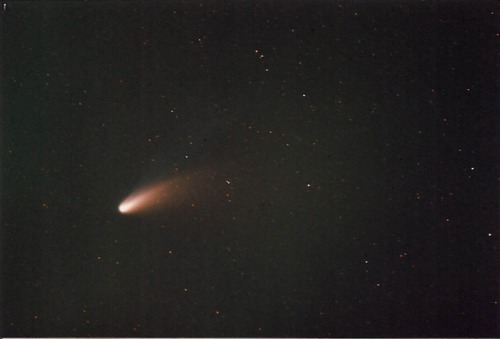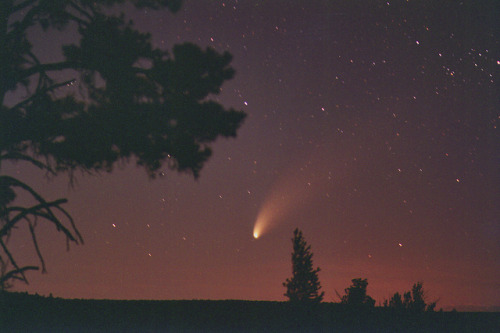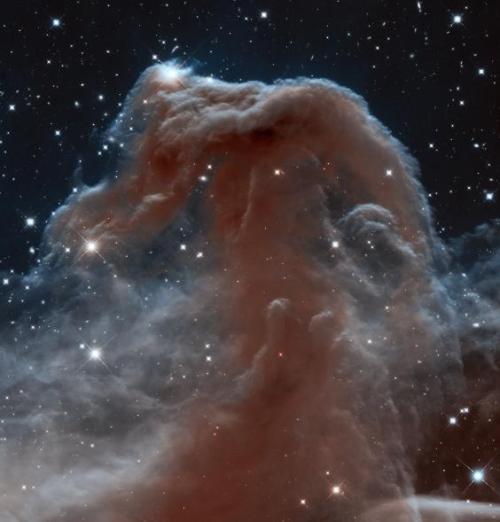Cassini Mosaic Of Iapetus, Showing The Bright Trailing Hemisphere With Part Of The Dark Area Appearing

Cassini mosaic of Iapetus, showing the bright trailing hemisphere with part of the dark area appearing on the right (the equatorial ridge is in profile on the right limb). The large crater Engelier is near the bottom; to its lower right can be seen the rim of a partly obliterated, slightly smaller older crater, Gerin.
This false-color mosaic shows the entire hemisphere of Iapetus (1,468 kilometers, or 912 miles across) visible from Cassini on the outbound leg of its encounter with the two-toned moon in Sept. 2007.
Credit: NASA/JPL
#cassini #iapetus #japeto #satellite #moon #lua #saturno #saturn #astronomy #astronomia https://www.instagram.com/p/B0kBRIHg3pQ/?igshid=meuno7r2ifg8
More Posts from Jmsconn and Others




Comet Hale-Bopp
images: x, x







Satellites source

Shuttle Launch As Seen From Space

Mammoth Hot Springs Mammoth Hot Springs - Impressed by the rock formations and their colors – white, yellow, gold, and orange! All these colors are due to the presence of bacteria and algae that flourish in the extremely hot waters of the springs. Over thousands of years they have formed terraces called travertine formations - Rain waters seep into the rocks, and once they reach a certain depth, they are heated by the action of boiling magma. They rise back to the surface of the earth. The waters at Mammoth Hot Springs are not expelled into the air. They cross the rocks up and deposit limestone sediments on the surface. The warm waters slowly flow from one basin to another, forming terraces as shown in the picture. It flows over some white limestone and orange travertine deposits. Mammoth Hot Springs is “journey to the center of Earth”, but outdoors!

Total solar eclipse, 2 July 2019.
Credits: ESA/CESAR
To the Moon and Beyond: Why Our SLS Rocket Is Designed for Deep Space
It will take incredible power to send the first woman and the next man to the Moon’s South Pole by 2024. That’s where America’s Space Launch System (SLS) rocket comes in to play.

Providing more payload mass, volume capability and energy to speed missions through deep space than any other rocket, our SLS rocket, along with our lunar Gateway and Orion spacecraft, creates the backbone for our deep space exploration and Artemis lunar mission goals.
Here’s why our SLS rocket is a deep space rocket like no other:
It’s a heavy lifter

The Artemis missions will send humans 280,000 miles away from Earth. That’s 1,000 times farther into space than the International Space Station. To accomplish that mega feat, you need a rocket that’s designed to lift — and lift heavy. With help from a dynamic core stage — the largest stage we have ever built — the 5.75-million-pound SLS rocket can propel itself off the Earth. This includes the 57,000 pounds of cargo that will go to the Moon. To accomplish this, SLS will produce 15% more thrust at launch and during ascent than the Saturn V did for the Apollo Program.
We have the power

Where do our rocket’s lift and thrust capabilities come from? If you take a peek under our powerful rocket’s hood, so to speak, you’ll find a core stage with four RS-25 engines that produce more than 2 million pounds of thrust alongside two solid rocket boosters that each provide another 3.6 million pounds of thrust power. It’s a bold design. Together, they provide an incredible 8.8 million pounds of thrust to power the Artemis missions off the Earth. The engines and boosters are modified heritage hardware from the Space Shuttle Program, ensuring high performance and reliability to drive our deep space missions.
A rocket with style

While our rocket’s core stage design will remain basically the same for each of the Artemis missions, the SLS rocket’s upper stage evolves to open new possibilities for payloads and even robotic scientific missions to worlds farther away than the Moon like Mars, Saturn and Jupiter. For the first three Artemis missions, our SLS rocket uses an interim cryogenic propulsion stage with one RL10 engine to send Orion to the lunar south pole. For Artemis missions following the initial 2024 Moon landing, our SLS rocket will have an exploration upper stage with bigger fuel tanks and four RL10 engines so that Orion, up to four astronauts and larger cargoes can be sent to the Moon, too. Additional core stages and upper stages will support either crewed Artemis missions, science missions or cargo missions for a sustained presence in deep space.
It’s just the beginning

Crews at our Michoud Assembly Facility in New Orleans are in the final phases of assembling the core stage for Artemis I— and are already working on assembly for Artemis II.
Through the Artemis program, we aim not just to return humans to the Moon, but to create a sustainable presence there as well. While there, astronauts will learn to use the Moon’s natural resources and harness our newfound knowledge to prepare for the horizon goal: humans on Mars.
Make sure to follow us on Tumblr for your regular dose of space: http://nasa.tumblr.com

Known as the Horsehead Nebula – but you can call it Starbiscuit.
Found by our Hubble Space Telescope, this beauty is part of a much larger complex in the constellation Orion.
Make sure to follow us on Tumblr for your regular dose of space: http://nasa.tumblr.com.


-
 gnsispr reblogged this · 4 years ago
gnsispr reblogged this · 4 years ago -
 pomesa reblogged this · 5 years ago
pomesa reblogged this · 5 years ago -
 necrodykes reblogged this · 5 years ago
necrodykes reblogged this · 5 years ago -
 glitterycatpuppy reblogged this · 5 years ago
glitterycatpuppy reblogged this · 5 years ago -
 glitterycatpuppy liked this · 5 years ago
glitterycatpuppy liked this · 5 years ago -
 ocheeva reblogged this · 5 years ago
ocheeva reblogged this · 5 years ago -
 tkpvsttg-fermatainmistocair liked this · 5 years ago
tkpvsttg-fermatainmistocair liked this · 5 years ago -
 nlockett reblogged this · 5 years ago
nlockett reblogged this · 5 years ago -
 nlockett liked this · 5 years ago
nlockett liked this · 5 years ago -
 cosmologicalcryptid reblogged this · 5 years ago
cosmologicalcryptid reblogged this · 5 years ago -
 jmorr101 reblogged this · 5 years ago
jmorr101 reblogged this · 5 years ago -
 jmorr101 liked this · 5 years ago
jmorr101 liked this · 5 years ago -
 nezha reblogged this · 5 years ago
nezha reblogged this · 5 years ago -
 nezha liked this · 5 years ago
nezha liked this · 5 years ago -
 tuoheye liked this · 5 years ago
tuoheye liked this · 5 years ago -
 7hiefence liked this · 5 years ago
7hiefence liked this · 5 years ago -
 flashesofgold reblogged this · 5 years ago
flashesofgold reblogged this · 5 years ago -
 ruidoazul liked this · 5 years ago
ruidoazul liked this · 5 years ago -
 0ciredef liked this · 5 years ago
0ciredef liked this · 5 years ago -
 mick1762015 reblogged this · 5 years ago
mick1762015 reblogged this · 5 years ago -
 mick1762015 liked this · 5 years ago
mick1762015 liked this · 5 years ago -
 fairlyoddartist liked this · 5 years ago
fairlyoddartist liked this · 5 years ago -
 dedeuniversee liked this · 5 years ago
dedeuniversee liked this · 5 years ago -
 writerchiclady reblogged this · 5 years ago
writerchiclady reblogged this · 5 years ago -
 afjomat-blog liked this · 5 years ago
afjomat-blog liked this · 5 years ago -
 skoolight-blog liked this · 5 years ago
skoolight-blog liked this · 5 years ago -
 fuckingkissinger liked this · 5 years ago
fuckingkissinger liked this · 5 years ago -
 neist reblogged this · 5 years ago
neist reblogged this · 5 years ago -
 neist liked this · 5 years ago
neist liked this · 5 years ago -
 arle00 liked this · 5 years ago
arle00 liked this · 5 years ago -
 preem79 liked this · 5 years ago
preem79 liked this · 5 years ago -
 profluisrodrigues-blog liked this · 5 years ago
profluisrodrigues-blog liked this · 5 years ago -
 exemplar1 reblogged this · 5 years ago
exemplar1 reblogged this · 5 years ago -
 exemplar1 liked this · 5 years ago
exemplar1 liked this · 5 years ago -
 s2dios-blog liked this · 5 years ago
s2dios-blog liked this · 5 years ago -
 protopsofficial-blog liked this · 5 years ago
protopsofficial-blog liked this · 5 years ago -
 i-am-a-fucking-banana liked this · 5 years ago
i-am-a-fucking-banana liked this · 5 years ago -
 teutonic-knight07 liked this · 5 years ago
teutonic-knight07 liked this · 5 years ago -
 hellokrissi reblogged this · 5 years ago
hellokrissi reblogged this · 5 years ago -
 bibbika liked this · 5 years ago
bibbika liked this · 5 years ago -
 theprominens liked this · 5 years ago
theprominens liked this · 5 years ago -
 pearlyfeldspar liked this · 5 years ago
pearlyfeldspar liked this · 5 years ago -
 cross-talk liked this · 5 years ago
cross-talk liked this · 5 years ago -
 jimmything liked this · 5 years ago
jimmything liked this · 5 years ago -
 shawnarichauthor liked this · 5 years ago
shawnarichauthor liked this · 5 years ago -
 tolovethelove-blog liked this · 5 years ago
tolovethelove-blog liked this · 5 years ago
